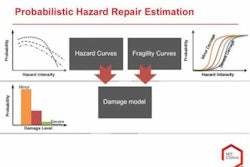Build with Strength, a coalition of the National Ready Mixed Concrete Association, held a roundtable event with Florida state lawmakers, officials, and members of the build and code communities to discuss a recent Massachusetts Institute of Technology (MIT) study entitled “A Break-Even Hazard Mitigation Metric.” The study confirms the importance of using resilient construction techniques in regions prone to extreme weather events such as Hurricane Matthew. Tuesday’s roundtable focused on life-cycle savings, long-term value, and cost-effective structures in Florida.
Despite implicit risks to the structural integrity of countless businesses and homes in weather damage-prone parts of Florida, many designers and developers continue to build structures with inadequate resiliency due to concerns with high initial costs. However, using cheaper construction techniques can end up costing more in the long run. According to the MIT study, initial investment in mitigation is the key to a sound structure. The study highlights that an initial hazard mitigation investment of $340,000 on top of a $10 million investment in a sample building would mitigate enough storm damage over the structure’s lifetime to pay for itself.
Although Florida was largely spared from the worst of Hurricane Matthew, state residents and lawmakers know the destructive power of these storms. The insured value of residential and commercial properties in coastal counties now exceeds $13 trillion.
“Too much emphasis is place on minimizing initial building costs and not enough attention is paid to the high costs of rebuilding after a storm. We need elected officials to take a more long-term and sustainable view by supporting resilient building efforts,” said Jeremy Gregory, Executive Director of the Concrete Sustainability Hub at the Massachusetts Institute of Technology.
More than a month after Matthew ripped up the Atlantic coastline, Florida residents are still grappling with an estimated $606 million in damages. By the end of October, only 43 percent of the 100,589 insurance claims had been closed, and with the 2016 Atlantic hurricane season now in the rearview mirror, Florida is in the midst of rebuilding. The MIT study on hazard mitigation assists those looking to build and re-build with resiliency in mind.
Learn more at www.buildwithstrength.com













![Fcp Racatac Chair 10893876[1]](https://img.forconstructionpros.com/mindful/acbm/workspaces/default/uploads/2025/10/fcp-racatac-chair-108938761.10l0At5WXv.png?ar=16%3A9&auto=format%2Ccompress&bg=fff&fill-color=fff&fit=fill&h=135&q=70&w=240)





